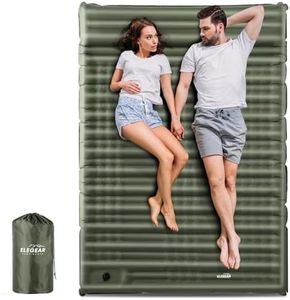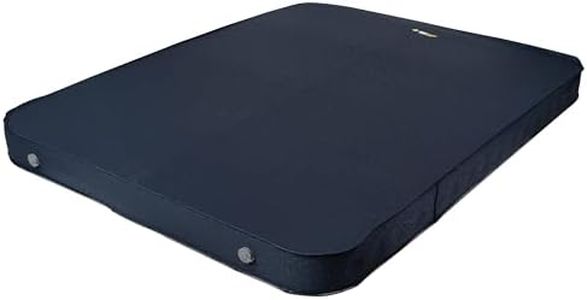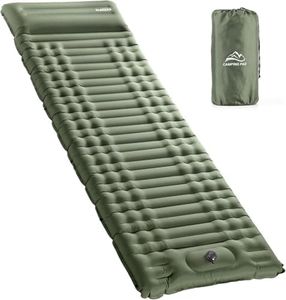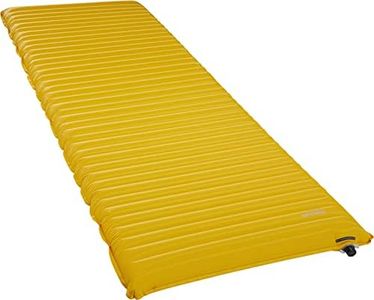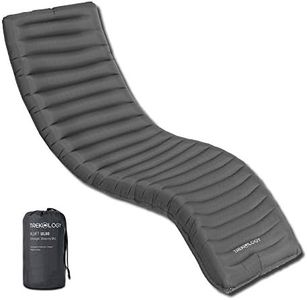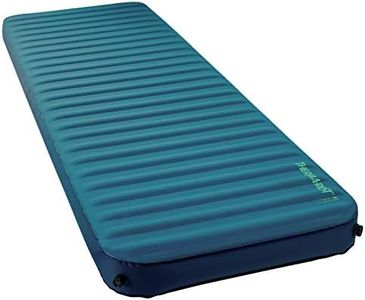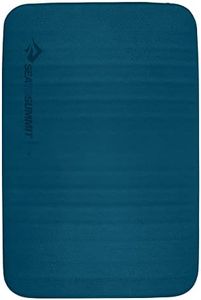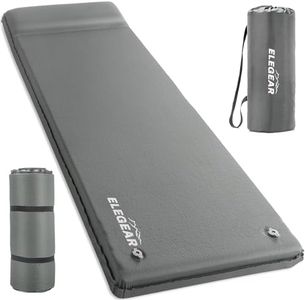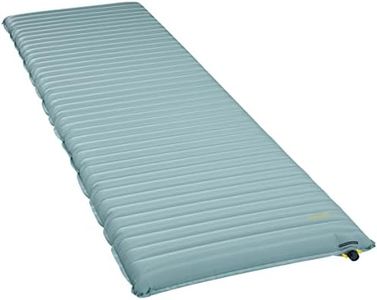We Use CookiesWe use cookies to enhance the security, performance,
functionality and for analytical and promotional activities. By continuing to browse this site you
are agreeing to our privacy policy
10 Best Camping Mat For Side Sleepers
From leading brands and best sellers available on the web.Buying Guide for the Best Camping Mat For Side Sleepers
Choosing the right camping mat as a side sleeper is all about getting a balance between support and comfort so you can wake up refreshed after a night outdoors. Side sleepers specifically need mats that cushion the pressure points along the hips and shoulders, since these areas bear most of your weight in this sleeping position. To make sure you buy a mat that matches your needs, it helps to understand the key features and how they relate to comfort, warmth, portability, and durability.ThicknessThickness refers to how thick the mat is when it's fully inflated or unrolled. It matters a lot for side sleepers because a thicker mat can better cushion your hips and shoulders from the hard ground, preventing discomfort from pressure points. Mats are usually available in three ranges: thin (under 2 inches), medium (2 to 3 inches), and thick (over 3 inches). Thin mats are light but can feel hard for side sleepers; medium mats provide a balance of comfort and portability, while thick mats offer the most cushioning. Side sleepers generally benefit from a mat that's at least 2.5 inches thick, as this provides the softness needed to keep those key areas off the ground.
Insulation (R-value)The R-value tells you how well a camping mat resists heat loss to the ground, in other words, how insulated it is. This is important because you can lose a lot of body heat to the ground, especially if you’re camping in cool or cold conditions. R-values typically range from less than 2 (minimal insulation, best for warm weather) up to 5 or more (excellent insulation for cold-weather camping). For summer camping, a low R-value might be fine. If you plan to camp in spring, fall, or anywhere cold, look for a mat with an R-value of 3 or higher. Side sleepers should pay special attention to this since the extra contact with the mat can make it easier to feel the chill.
Width and LengthThese measurements tell you how much surface area the mat covers. Side sleepers often curl up or shift positions, so a mat that's too narrow or short can be uncomfortable. Mats come in regular (about 20 inches wide, 72 inches long), wide (25 inches or more), and long (up to 78 inches or more) versions. If you move around, prefer more space, or are taller or broader, go for wider and/or longer mats. If you are average size and don’t move much, standard sizes might work, but for comfort, especially on your side, a wider mat is often a good idea.
Type of Construction (Air, Self-Inflating, or Foam)Camping mats come in various constructions: air mats, self-inflating mats, and closed-cell foam pads. Air mats are lightweight and very packable, and many modern ones offer enough thickness and support for side sleepers. Self-inflating mats combine foam and air and tend to provide a good mix of support and convenience, but can be bulkier. Foam pads are the most basic and durable, but are often too thin for side sleepers who need more cushioning. For most side sleepers, air or self-inflating mats with adequate thickness are the best options for comfort.
Surface Texture and FabricThe surface material affects both comfort and slippage. Some mats use soft, textured fabrics to reduce noise and prevent sleeping bags from sliding off, while others use more robust but slick materials. Side sleepers, who shift more on the mat, might prefer a softer or textured surface to stay in place and feel comfortable against the skin. Think about whether you value quietness, grip, or just a soft touch, and choose accordingly.
